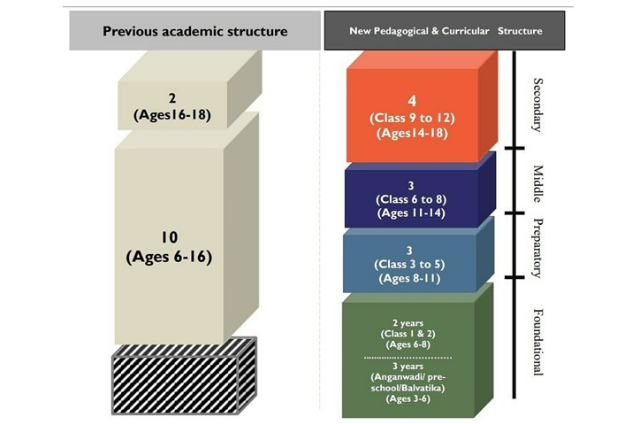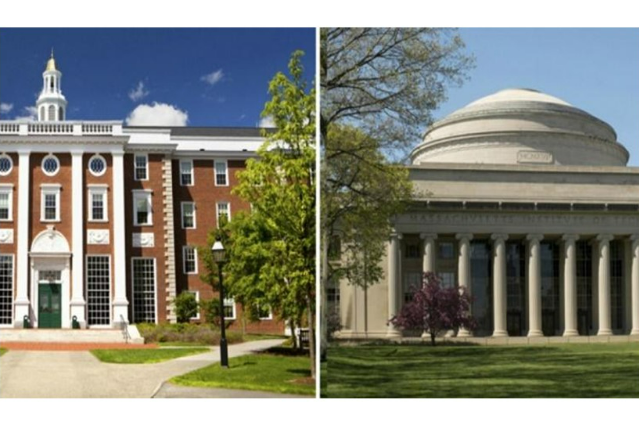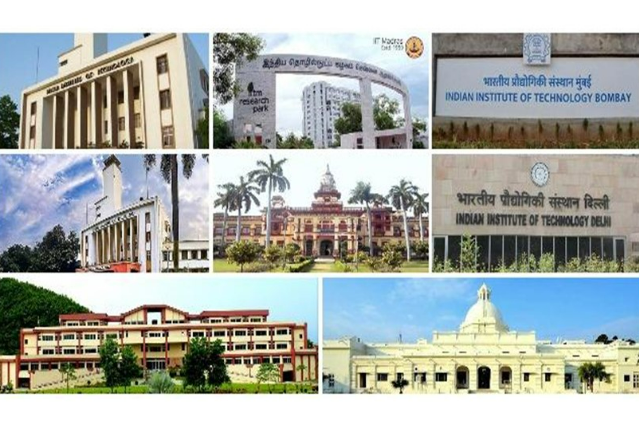Introduction
“Education is the passport to the future, for tomorrow belongs to those who prepare for it today.” ~ Malcolm X
Education is essential for realising one's best talent, creating a just and balanced community, and advancing national progress. The key to India's continuous rise and influence on the global arena in support of economic development, social fairness and equality, scientific progress, national unity, and cultural conservation is to provide widespread accessibility to higher education. Comprehensive high learning is the most effective approach to develop and use our country's vast skills and capabilities for the benefit of individuals, society, the nation, and the globe. Over the next decade, India will have the world's largest generation of young people, and the capability to offer them with high-quality opportunities for schooling will define the nation's destiny.

By 2030, the global education development strategy aims to "provide inclusive and equitable quality education and promote lifelong learning opportunities for all," as stated in Goal 4 (SDG4) of the 2030 Agenda for Sustainable Development, which India signed in 2015. To fulfil all of the important targets and goals (SDGs) of the 2030 Agenda for Sustainable Development, the entire educational system will need to be restructured to promote and nurture knowledge. The democratic welfare administration is not only concerned in establishing educational establishments as a means of educating everyone, but it is also concerned with providing a high-quality, even-handed, and affordable schooling. Political, social, cultural, and economic limitations have performed key roles in marginalization and alienation in India, and academic practices are clearly distinct from what is imagined in India.
To achieve inclusive education and reduced educational inequities, the government's educational programmes have addressed these facts fully and decisively. The Indian government, in collaboration with state governments, has developed a number of policy initiatives and programmes aimed at strengthening the educational system, with the majority of policies addressing concerns of accessibility and equity.
Salient features of New Education Policy - 2020
The final policy is based on the initial report issued by the Ministry of HRD-appointed Dr. K. Kasturirangan committee in 2017. Apart from approving the report, the cabinet also agreed to change the name of the Ministry of Human Resources Development to the Ministry of Education. The New Education Policy covers all aspects of schooling and higher education, as well as providing important objectives and a fundamental redesign of the educational system.

Recognizing that approximately 85 percent of a child's cumulative brain development happens before the age of six, the present 10+2 structure will be turned into a new 5+3+3+4 framework, with a solid foundation of Early Childhood Care and Education (ECCE) beginning at the age of three. NCERT will establish a National Curricular and Pedagogical Framework for Early Childhood Care and Education (NCPFECCE) in two sections (0-3 and 3-8). According to numerous reports, a high percentage of current elementary school kids lack fundamental literacy and numeracy skills (the ability to read and comprehend basic text and basic calculation). As a result, by 2025, the educational system's top objective will be to establish equitable basic literacy and numeracy in elementary school.
The Ministry of Human Resource Development (MHRD) has proposed establishing a National Mission on Foundational Literacy and Numeracy as a priority to attain this goal. As a result, all state/UT governments will immediately draft a plan to achieve universal fundamental literacy by 2025. At the primary level, the policy aspires to achieve a pupil-teacher ratio (PTR) of less than 30:1. (25:1 for socio-economically backward areas).
Understanding that the early hours following a good breakfast might be very productive for the study of cognitively demanding patients, a basic yet stimulating breakfast will be offered in addition to noon meals. Whereas the Gross Enrolment Ratio (GER) for Grades 6-8 is 90.9 percent, it is only 79.3 percent and 56.5 percent for Grades 9-10 and 11-12, respectively, suggesting a substantial proportion of dropout after Grade 5 and much more after Grade 8 – indicating a significant number of dropout after Grade 5. The initiative aims to reintegrate these children into the educational system, with a goal of achieving a 100 percent Gross Enrolment Ratio from preschool to secondary school by 2030.
For each subject, the curriculum will be pared down to its bare bones in order to promote critical thinking and information, scientific breakthrough, and analysis-based learning. During school, there is a provision for vocational training as well as internships. The new curriculum will emphasise holistic growth and a diverse range of subjects, with no sharp distinctions between subjects and disciplines. The medium of teaching will be mother tongue (local language/regional language) until at least Grade 5, but preferably until Grade 8 and beyond.
The policy embraces the three-language formula; however, the three-language formula will have more freedom, and no language will be imposed on any state. The NCERT will be in charge of developing a new and comprehensive National Curricular Framework for School Education, NCFSE 2020-21. The school-based evaluation progress card will be totally overhauled to become a holistic, 360-degree, multifunctional evaluation that represents each learner's individuality.
Other changes that have been introduced under the New Education Policy 2020
A National Educational Technology Forum (NETF) is proposed in the strategy to establish a forum for the open interchange of thoughts on the use of technologies to improve training, evaluation, planning, and management. A new and well-supported component body of the NCERT will design an excellent adult learning national curriculum, as well as the required infrastructures to facilitate continuous learning. Private education schools of higher learning will be subject to a fee cap.

Private education schools of higher learning will be subject to a fee cap. It also provides the path for international colleges to establish campuses in India, as well as encouraging top Indian educational institutions to expand globally. The Centre will establish a 'Gender Inclusion Fund' to strengthen the country's capacity to educate all females and transgender students with an equitable and high-quality education. Special education zones will be established for socioeconomically challenged populations based on gender identities (including transgender individuals), socioeconomic identities (SC, ST, OBC, minorities), and regional identities. It also reaffirms the goal of increasing public spending on education to achieve 6% of GDP as soon as possible (from current levels of 4.6 percent).
How will these modifications be put in place?
The NEP is merely a guideline and is not required to be followed. The proposed changes can only be executed collectively by the Centre and the states because education is a concurrent issue (both the Centre and the state governments can create legislation on it). This is not going to happen right away. The current government has set a deadline of 2040 for the full implementation of the policy. A significant amount of finance is also necessary; the 1968 NEP was hampered by a lack of funds.
To establish implementation strategies for each facet of the NEP, the government proposes to form subject-specific committees with representatives from relevant ministries at both the federal and state levels. Multiple bodies, including the HRD Ministry, state Education Departments, school boards, NCERT, Central Advisory Board of Education, and National Testing Agency, would be listed in the plans. A yearly collaborative assessment of performance against stated goals will continue the preparation.
How does the government intend to make higher education more accessible to international students?
According to the document, colleges from the top 100 universities in the world would be permitted to establish campuses in India. While the criteria for defining the top 100 aren't specified, the existing government may rely on the 'QS World University Rankings,' as it did in the past when choosing universities for 'Institute of Eminence' status. None of this would be possible unless the HRD Ministry passes a new law outlining how foreign universities will function in India.
It's unclear whether a new law will encourage the world's greatest institutions to open campuses in India. The Indian Express stated in 2013, when the UPA-II was attempting to pass a similar Bill, that the top 20 global universities, including Yale, Cambridge, MIT, and Stanford, as well as the Universities of Edinburgh and Bristol, have expressed little interest in approaching the Indian market.
Foreign universities' participation in India is presently restricted to collaborative twinning programmes, faculty exchange with partnered institutions, and remote education. In India, about 650 international education institutions have similar agreements.
Will a multidisciplinary concentration weaken the character of single-stream universities like IITs?
IITs are already taking steps in this direction. IIT-Delhi has a humanities department and has just established a public policy department. There is a School of Medical Science and Technology at IIT-Kharagpur. "Some of the greatest colleges in the US, such as MIT, have extremely strong humanities departments," IIT-Delhi head V Ramgopal Rao remarked when asked about various disciplines. Consider the situation of a civil engineer. Knowing how to construct a dam will not solve an issue. He must be aware of the dam's environmental and socioeconomic consequences. Many engineers are also starting their own businesses. Shouldn't they have a basic understanding of economics? Today, a lot more considerations go into anything that has to do with engineering."
Conclusion
The New Education Policy-2020 embodies the country's desire to build a worldwide knowledge powerhouse by incorporating the best of global academic initiatives. By 2030, the global education development strategy – as represented in India's adoption of Goal 4 (SDG4) of the 2030 Agenda for Sustainable Development in 2015 – aims to "provide inclusive and equitable quality education and promote lifelong learning opportunities for all." The Education Policy is a move in the correct way if it is followed over the lengthy period of time that it is intended to cover.
. . .
References:



